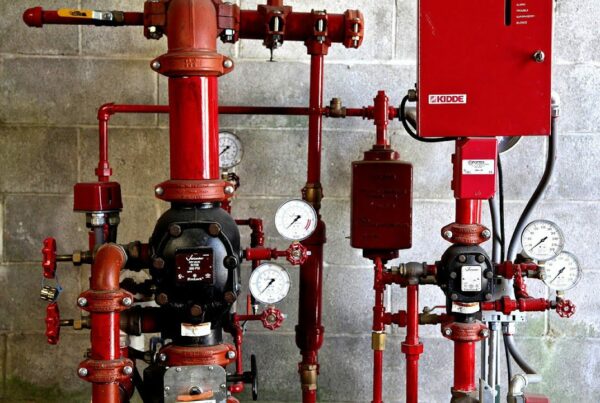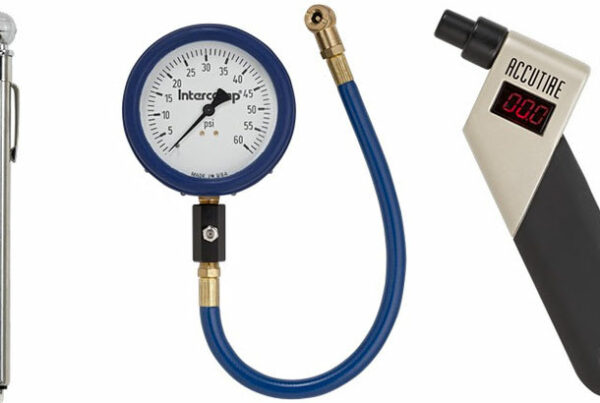Pollution Liability Insurance. Almost every artisan and specialty contractors have some unique risks they face due to the very hands-on nature of their work. Unintentional pollution at the job site is one of these risks, especially if they work with materials that could create risks to the environment or public health like asbestos, lead paint, mold, paints, and solvents. Coverage for pollution liability is probably excluded from their General Liability policy so this is why Contractors Pollution Liability (CPL) coverage exists. Coverage may include cleanup cost, court – ordered damages, legal fees, bodily injury, damage to property and governmental fines. Below are claim examples:
Concrete contractor – Laid an undercoat of slag while creating a new runway for a large international airport in the Midwest. After the runway was complete, it was discovered that the slag was contaminated and was leaching pollutants into a tributary of one of the Great Lakes. The claim exceeded $400,000.
HVAC contractor – Installed an HVAC system in a new office building. Within weeks after opening, the building had to close due to occupants being overcome with breathing problems and headaches. The contactor was one of many parties sued. During discovery, it was determined that the HVAC system was installed exactly as the specs described. However, the contractors had to absorb over $250,000 in uncovered defense costs because he had no environmental coverage, therefore, no defense costs.
HVAC Contactor – A contractor removed ductwork from a hospital’s HVAC system. It was later determined that the ductwork was home to a dangerous fungus. The dismantling activities and the on-site storage of dismantled ductwork caused the fungus to spread into the hospital. Patients became infected with the fungus; some were even critically infected. The contractor was found liable for the spread of the fungus and faced bodily injury and property damage claims in excess of $1 million.
Paving contractor – After laying the “tack” coat of Naphtha in preparation for the final coat of blacktop on a new road job, a heavy rain hit, washing the toxic material into a drainage ditch along the road and, subsequently, into a stream. The clean-up of this claim cost over $150,000.
Mechanical contractor – A contractor was called to a site where an underground storage tank was being removed. He was contracted to loosen a heavy coupling for which the tank removal company did not have the adequate tools. Several days after leaving the site, having shaken the pesky coupling free, the contractor was notified that he was being sued for the tank leaking underground, spilling hundreds of gallons of gasoline into the soil. It seems that the contractor dropped a heavy wrench down the intake spout of the fiberglass tank, cracking the bottom, and causing the leak. Total costs to defend himself (He alleged that there was no way of knowing whether something else caused the leak.) and pay damages exceeded $250,000.
Painting contractor – While painting the interior of a nursing home, the contractor was sued by over a dozen residents alleging that fumes as a result of inadequate venting overcame them. Total claim was over $200,000.
Pipeline contractor – A contractor suffered a large claim when he installed a new storm water drainage system for a municipality in MI. Not long after completion a very heavy rain struck the city, causing a backup of water with human waste into the basements of over 100 high-priced homes. The contractor was sued for installing an inadequate system and the environmental insurance carrier paid over $800,000.
Renovation Contactor – A contractor was reconditioning a tile floor in a building undergoing extensive renovations. Several workers in the building filed bodily injury claims totaling $25,000 against the contractor. The workers had inhaled toxic vapors from the sealants used in the reconditioning process.
Renovation Contactor – A residential contractor used solvent to remove paint from a residential structure and improperly disposed of the materials on-site. A group of residents filed a $10 million toxic vapor inhalation suit against the contractor, citing bodily injury, trespass of pollutants and adverse effects to their quality of life.
Renovation Contactor – A contractor disposed of sealants and solvents containing toluene in a covered commercial dumpster. After climbing into the dumpster, two 10-year-old children were overcome by fumes and died. The contractor faced a claim in excess of $2 million for inadequate disposal of the waste toluene.
Maintenance Contactor – A contractor was employed to control the vegetation along an overhead power line right of way. a herbicide was applied to reduce the vegetation, following which, a heavy rainstorm occurred and washed herbicide on to adjoining farmland. The farmer’s crops and land were severely damaged and the contractor was held liable for the damages.
Utility Contactor – A utility contractor undertaking construction of a new overhead power line employed a sub-contractor for installation of the power poles. The sub-contractor hit an underground sewer while undertaking this work which resulted in damage to the sewer and the spillage of a significant volume of raw sewage. The utility contractor was held vicariously liable for the actions of the sub-contractor and for costs in respect of repair to the sewer and clean-up of the spilled sewage.
Grading Contactor – Inadequate erosion control measures implemented during construction of an abutment for a highway bridge resulted in petroleum-impacted sediment being released into a pristine waterway. The contractor was required to pay significant clean-up costs.
Grading Contactor – A contractor was constructing a road in an area where the water table was extremely shallow which necessitated extensive dewatering to allow excavation to the sub-grade level. After the dewatering wells had been drilled and pumping had been in progress for two days, the contractor detected petroleum hydrocarbon odor in the groundwater being extracted. Petroleum hydrocarbons had leaked from an underground tank near the project site into the groundwater. This was then exacerbated by the dewatering operations for the new road which was pulling the contaminated groundwater underneath the site. In a pump and treat remediation program lasting several weeks, the contractor was required to clean up both the soil and groundwater in respect of the exacerbation of pollution conditions arising from his actions.
Excavation Contactor – An contractor was hired to perform grading operations for roads at a new subdivision. The contractor was following the engineering plans provided by the engineering firm. Unfortunately, the plans were incorrect, leading to an improper slope. When the first rain storm occurred, storm water ran off into the basements of several homes causing property damage. The excavation contractor was named in the lawsuit as well as the engineering firm. The end result: The excavation contractor was eventually dismissed, but not until $100,000 was spent on defense costs.
Maintenance Contractor – A contractor was lifting temporary barriers following completion of a permanent crash barrier repairs when a crane overturned spilling hydraulic oil and diesel into a wetland area adjacent to the road. The regulator responded to complaints from members of the public of oil on the water as well as water fowl coated with oil. The contractor was liable for substantial response costs and wetlands restoration.
Cleaning Contractor – While working at a mall, a company inadvertently mixed cleaners, one ammonia based, the other chlorine based. The result was a toxic cloud of ammonia chloride that caused respiratory distress in dozens of shoppers. Total cost of this claim $175,000
Janitorial contractor – Working at a mall, a cleaning company inadvertently mixed cleaners, one ammonia based, the other chlorine based. The result was a toxic cloud of ammonia chloride that caused respiratory distress in dozens of shoppers. Total cost of this claim: $175,000.
Flooring Contactor – A contractor (GC) installed new carpeting in an office building. One week after installation, the building owner informed the contractor that employees were complaining of headaches and dizziness. This was attributed to the odors from the new carpets. The general contractor could not prove that the manufacturer of the carpet or the carpet adhesive was responsible; thus, the contractor was left with the claim. The GC filed a claim with their general liability carrier. The claim was denied due to the fact that “hazardous materials” such as formaldehyde and volatile organic compounds associated with the carpeting and adhesives are pollutants.
Renovation Contactor – General contractor (GC) renovating a bank hired an asbestos abatement contractor. As part of their final cleanup process on a Friday, the abatement contractor utilized a high-pressure wash, resulting in saturated carpets, ceilings and walls. Materials remained saturated over the weekend while the HVAC system remained turned off. The GC was greeted with extensive mold growth throughout the building on Monday morning, and ultimately a $600,000 bill to correct the damage. Although the GC ensured that the subcontractor retained pollution insurance, the subcontractor had a mold exclusion on their policy, leaving the entire cost on the shoulders of the GC.
Concrete Contractor – A concrete contractor laid an undercoat of slag while creating a new runway for a large international airport in the Midwest. After the runway was complete, it was discovered that the slag was contaminated and was leaching pollutants into a tributary of one of the Great Lakes. The claim exceeded $400,000 Painting contractor – While working on the interior of a nursing home, a contractor was sued by over a dozen residents alleging that fumes as a result of inadequate venting overcame them. Total claim was over $200,000
Paving contactor – A city hired a contractor to finish six roads, two primary and four cul-de-sacs. The size of the job required that the contractor apply 2800 gallons of oil- based sealant. However, before the sealant could dry, precipitation washed it off the roads and into the city’s storm drains and a nearby stream. The oil-based sealant was found to be potentially harmful and the city inspector ordered the contractor to clean it up. Fifty property owners who lived along the stream tiled suit for bodily injury and property damage as a result of the washout. The contractor paid all costs associated with the cleanup and settlements for approximately $600,000
General Contactor – A general contractor was hired to remove PCB transformers at a warehouse. After thorough evaluation and verification of credentials, training procedures and state and federal licensing, several remediation subcontractors were brought in to assist in the project. One of the subcontractors was removing PCB oils from transformers located on the roof when contaminated oil spilled through an opening and splattered over the interior of the building. The owner of the warehouse sued to recover cleanup costs resulting from the spill incident. The subcontractor also sued the contractor, claiming it was not responsible for the spill but that the cause of the accident was a result of the general contractor’s negligence in meeting environmental regulations. The general contractor was found liable for cleanup costs of approximately $250,000, not including expenses





